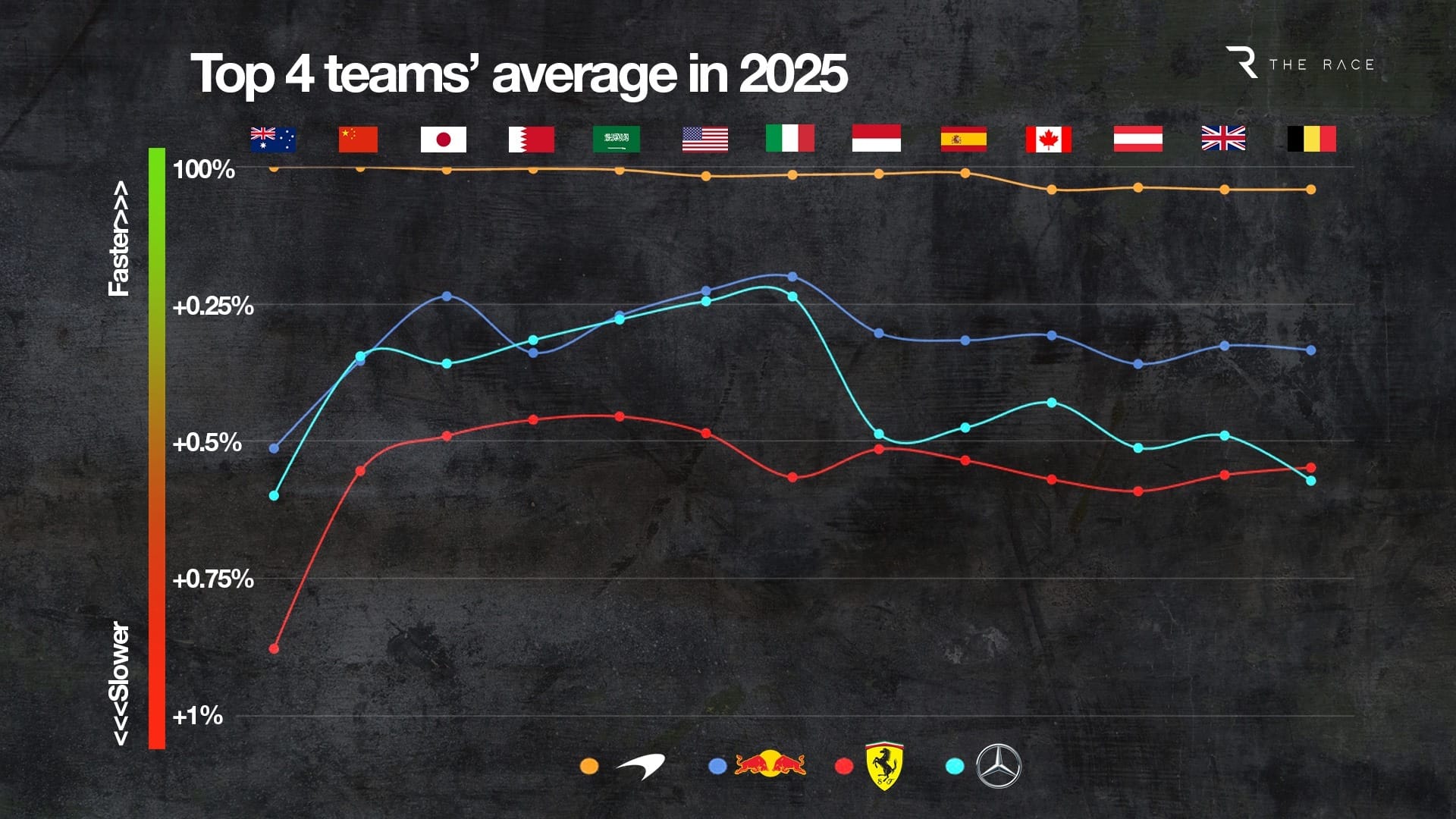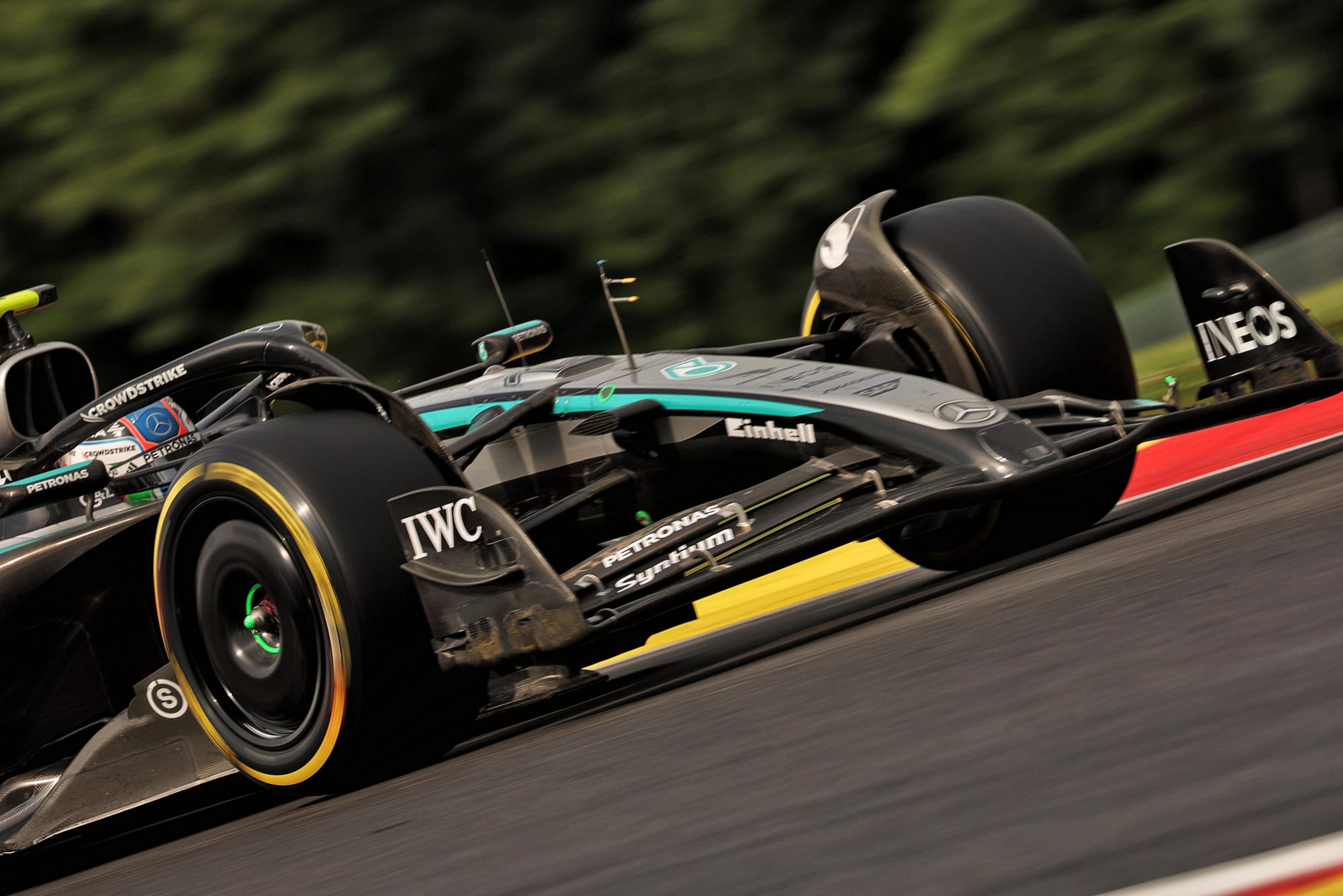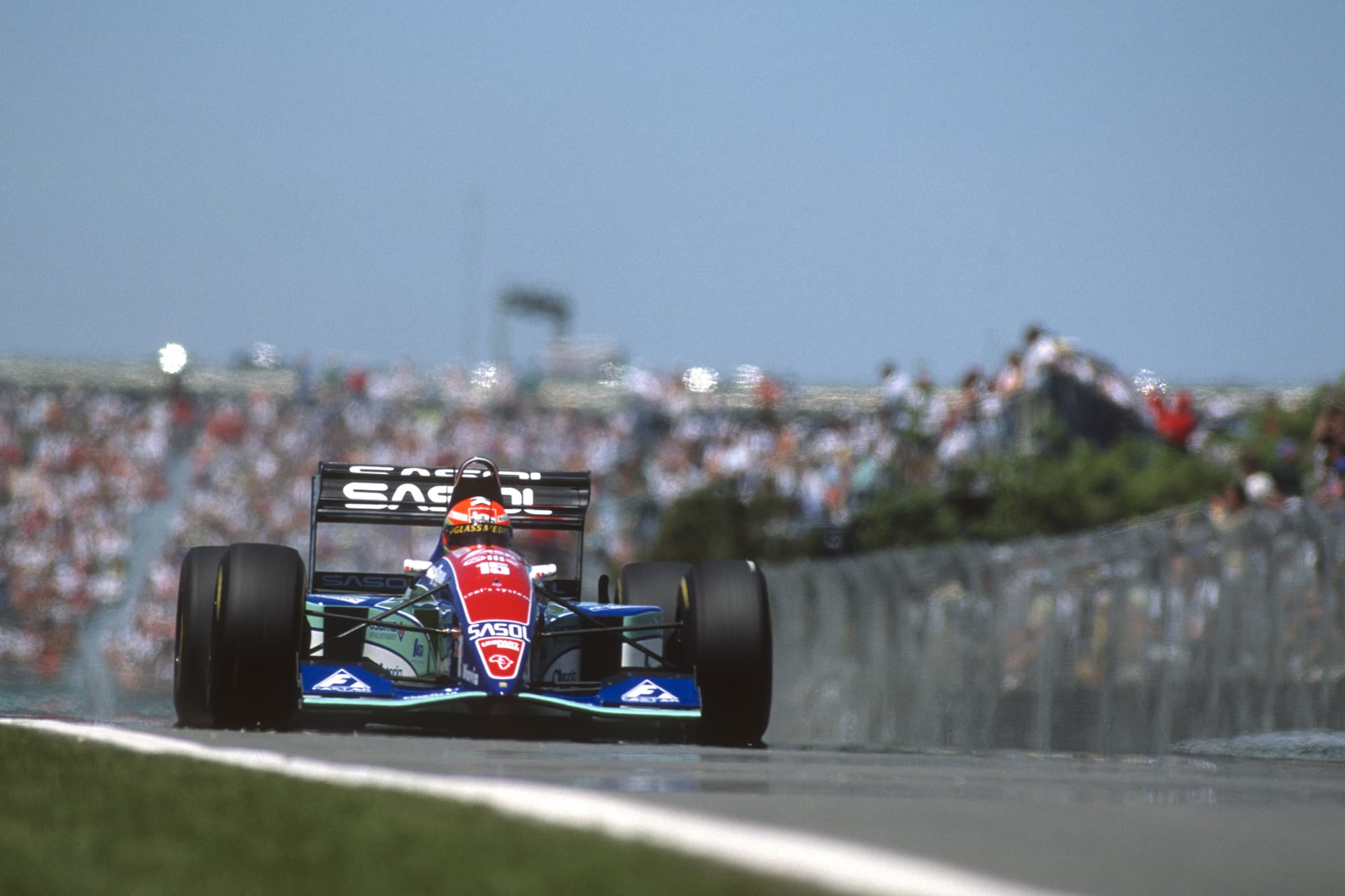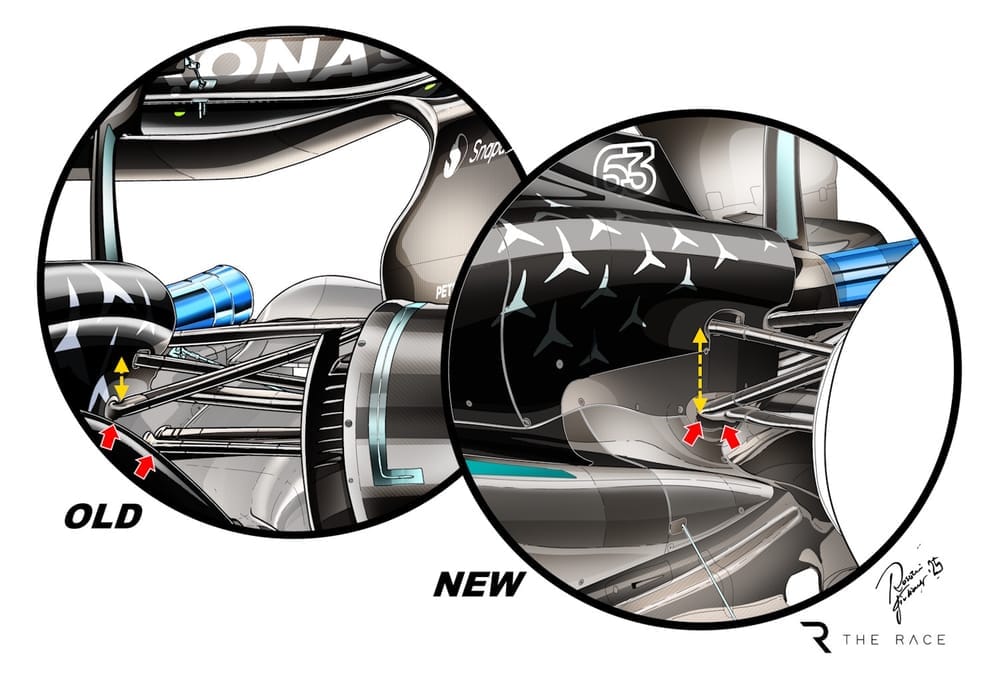Mercedes continues to be puzzled by its recent struggles, and it's not a good sign that the decision has been made to remove the Imola-specification rear suspension for Hungary.
That's the suspension that was initially taken off after Imola, then put back on after the Spanish Grand Prix because it was reckoned to work well and now is back off again because, as George Russell says, "it's slower".
Performance is all relative. As the below graph shows, the only team that seems to have any stability is McLaren, while the others are up and down like a yo-yo.

This is the sort of percentage performance graph teams need to look at to identify when they improved or tripped up.
As I always say, it's better to be consistently at a certain level of performance rather than up and down like we are seeing here for Mercedes.
When it’s like that and you get the team saying our car doesn’t really suit circuit X or doesn’t perform as well when it’s hot, that is simply an excuse and the worst thing you can do in F1 is make excuses to yourself.
In reality, the Mercedes indecision over the rear suspension amounts to ‘no decision’, and the opposite of a positive development plan.
While you are going back and forth with the specification to find where you went wrong, you are not going forward with the overall package and even if it’s just a tenth or two, the others probably are making those steps.
These effects can combine to become a double whammy in terms of performance.
"It's a guessing game, complete guessing game, when you try to say what maybe other teams have done to improve themselves," Mercedes technical director James Allison said after Spa.
"But when you have a situation where seemingly everybody's improved by the same amount, everybody, and you've just slipped backwards, more often than not when that happens it's because you have made yourself worse by that amount."

I don’t agree with it being a ‘guessing game’ - the stop watching doesn’t lie, as the season progresses you gather more data and if you do an in depth analysis post each race you can usually pick up the trends in performance for the whole grid and if they are positive or negative.
McLaren has the stability in performance currently that the others are only dreaming about. In past years (2010 to 2013) it was Red Bull, then from 2014 to arguably 2021 it was Mercedes’s time at the top, then Red Bull again from 2022 until the middle of 2024 when McLaren took over the mantle.
Every circuit has different requirements. This applies right through the car set-up, but to explain it simply and a little more visually, you could run a Monaco rear wing set up in Monza and the driver would love that extra grip until they saw the laptime. Or the reverse is you could run a Monza rear wing set-up in Monaco and the drivers just might need to earn their keep.
With the simulation tools that the teams now have, optimising the set-up pre-event should be second nature and the rear suspension is just part of it.
Anti-lift does what it says on the tin, it will keep the rear of the car lower while there is braking torque being transferred between the upright assembly (outer wishbone pickups) and the transmission housing (inner wishbone pickups).
The main problem is that when that braking torque is reduced, or in effect non-existent, the rear of the car will find its proper ride height for the aerodynamic load at that car speed. It will also increase the pro-squat when power is applied, so in effect, improve the traction.

Nothing's new in F1. Going back to 1994, so over 30 years ago, we had adjustable anti lift on the Jordan 194. In Montreal, Eddie Irvine loved it, but Rubens Barrichello hated it.
Irvine was the last of the late brakers and did it all in a straightline, while Barrichello was much more of a fingertip driver and would try to carry the speed into the corners.
Different drivers can cope with different situations, but sometimes it doesn’t come naturally to them.
In Montreal, where Mercedes finished first and third running the upgraded rear suspension, most of the braking is done before you apply steering lock, so the car would settle before you turn into the corner.
At other circuits, with faster corner entries, the driver will use some trail braking entering the corner to help get the front of the car into the corner. That appears to be where Mercedes’s problems arise.
I would have expected a team of the standing of Mercedes to be in a position to optimise the set-up before it actually gets to the track. After that, it should be about dotting the I’s and crossing the T’s and simply using your best efforts to keep up with the track changes as the weekend progresses.
Will Mercedes come away from Hungary thinking it has cracked it? I doubt it very much.



